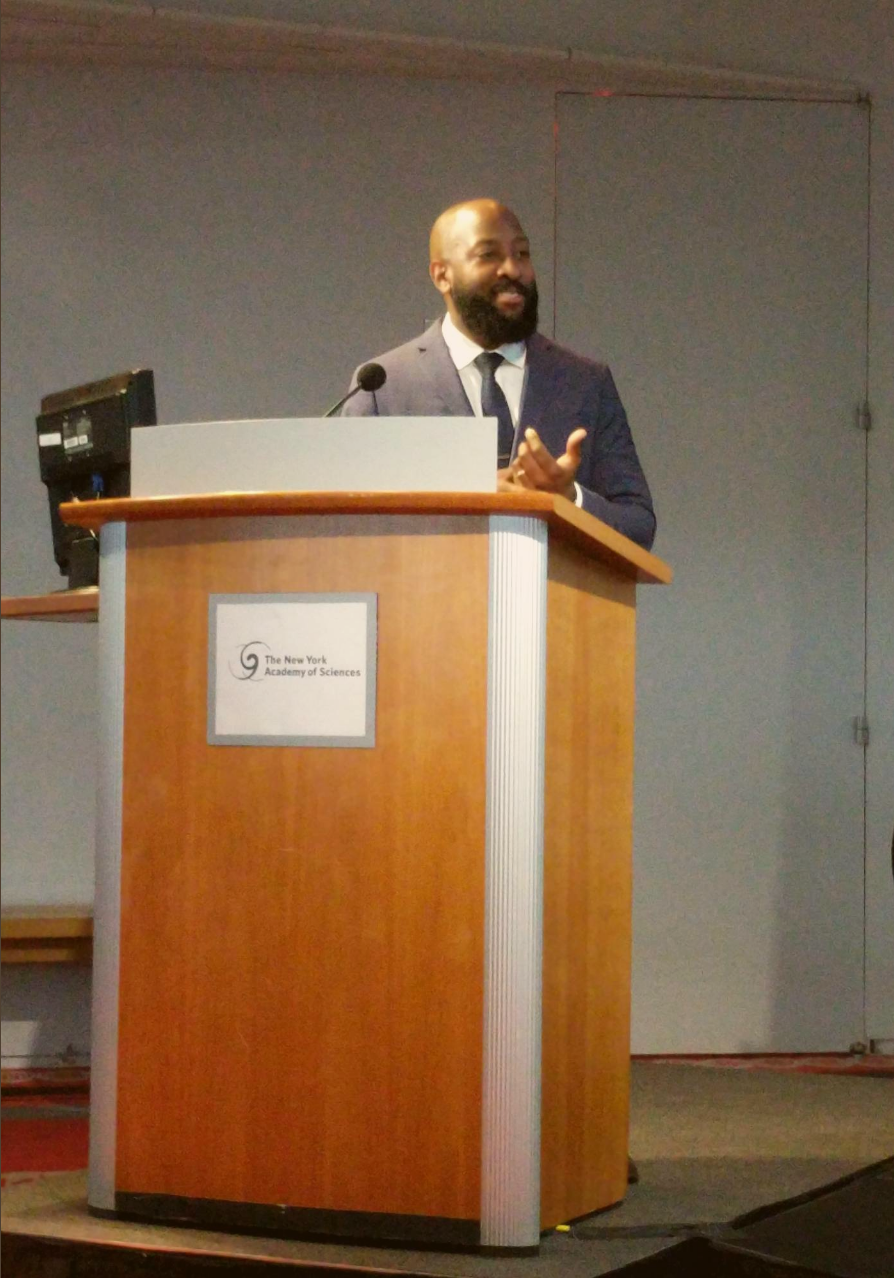by Prateek Jain
The fifth annual New York Energy Week kicked off on Monday night in a beautiful venue at the New York Academy of Sciences. To start things off, Angelique Mercurio, Enerknol’s CEO, reminisced about how over 8,000 people have convened through the NY Energy Week over the past 5 years and announced that both Governor Andrew Cuomo and Mayor Bill de Blasio have officially proclaimed June 19-22 as “Energy Week in the Empire State.”

Keynote Speaker – Mark Chambers
Angelique then invited the evening’s keynote speaker – Mark Chambers, Director of the NY Mayor’s Office of Sustainability on stage. Mark offered a powerful speech. He stated that our very first priority should be in asserting the fact that ‘Climate Change is real, and no one can opt out of it.’ He reminded the audience to raise their own voices as well.
 “You must dissent from the idea that this fight is not yours. It is.” – Mark Chambers
“You must dissent from the idea that this fight is not yours. It is.” – Mark Chambers
He acknowledged that while President Trump may have turned his back on the Paris Climate Accord, “we’re still in.” He also reminded the audience that its now up to us to become the change agents.
After some more memorable quotes, he concluded with a flourish and a final call to action, “it’s time to get to work.”
Panel – Transition to a Dynamic Energy Future
The evening continued with a conversation that centered around some of the hardest energy questions faced today – how do we adapt to a world where customers and third-parties are an integral part of the grid?
The keynote was followed by a thoughtful panel consisting of representatives from the various stakeholders. Peter Maloney, an expert who has shaped the energy conversation for years as an editor at Utility Dive introduced the audience to Susanne DesRoches, Deputy Director of Infrastructure Policy from the Mayor’s Office of Recovery and Resiliency, Shihab Kuran, the Co-founder, and CEO of Power Edison and Margerett Jolly, the Director of R&D for Con Edison.
The panel discussed various approaches to achieve the ambitious “80 by 50” goal of reducing 80% of the city’s emission by 2050. Susanne mentioned that the western parts of NY state have plentiful renewable energy generation capacity while the eastern parts of the state still rely heavily on fossil fuels.
However, the lack of transmission capacity hinders the renewable power generated in western New York state from being available for use in the eastern side of the state. Shihab countered that building more transmission infrastructure may not be the only solution to that problem: energy storage technologies may offer a “non-wires” solution to this transmission problem that may be much more economical in the long term.
Shihab also said that the new REV guidelines might encourage utilities to re-think the way they think of such expenses: “earlier, utilities used to earn money on Capital Expenses and pass through Operational Expenses to customers. With REV, they might flip this model on the head and pass through CapEx while earning returns on OpEx. Such a model might incentivize creative solutions like mobile energy storage and demand response investments appropriately.”
 These ideas led to a larger discussion about infrastructure challenges in our state and potential solutions to those problems. Susanne mentioned that within the next few years, over 75% of New York’s energy generation plants will be 50 or more years old. Shihab mentioned that the transmission lines are so congested that downstate NY pays over $1B a year in T&D congestion charges. Margarett mentioned that her day-to-day job is making sure that NYC’s old electrical lines don’t blow up.
These ideas led to a larger discussion about infrastructure challenges in our state and potential solutions to those problems. Susanne mentioned that within the next few years, over 75% of New York’s energy generation plants will be 50 or more years old. Shihab mentioned that the transmission lines are so congested that downstate NY pays over $1B a year in T&D congestion charges. Margarett mentioned that her day-to-day job is making sure that NYC’s old electrical lines don’t blow up.
All the panelists agreed that Energy Storage technologies might help relieve such constraints but more innovation is required. Concluding with thoughts about what they’re most excited about for the future, Margarett mentioned the data being unlocked by smart sensors, Shihab mentioned international mobile energy storage applications, and Susanne reminded everyone that the government is already targeting the deployment of 100 MWh of energy storage by 2021.
Check the schedule for the remaining days of the Fith Annual New York Energy Week!
About the Author
Prateek Jain is an MBA student at Columbia Business School focusing on renewable energy entrepreneurship and finance. Prior to business school, Prateek designed business jets at Gulfstream Aerospace and built battery systems for the first gas-electric hybrid airplane in the world.

